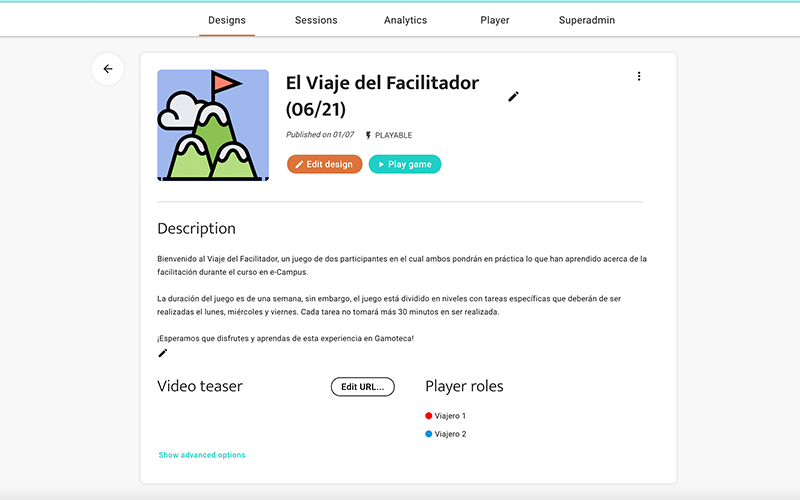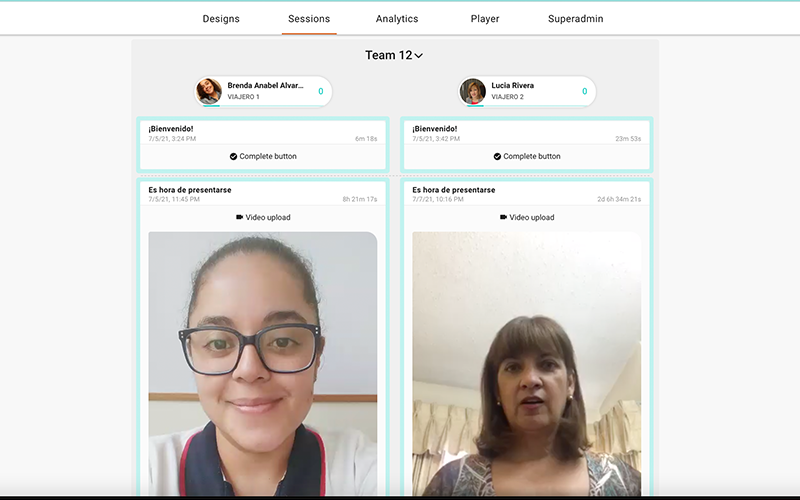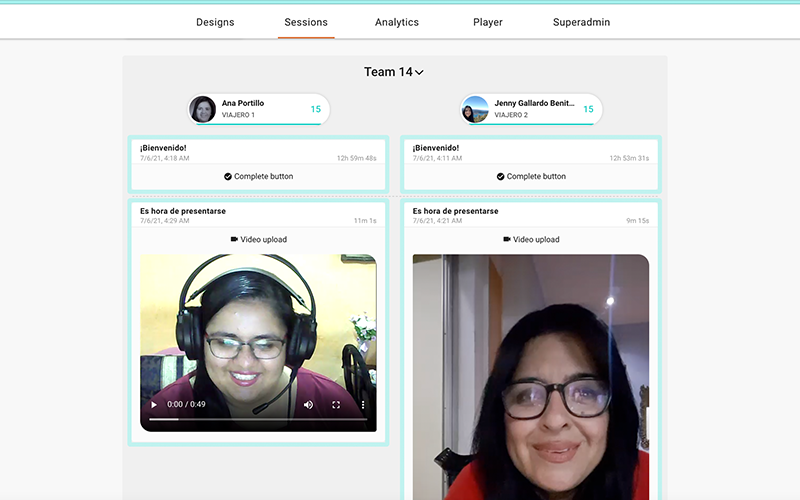Playing (and creating) human-connected learning experiences with El Salvador’s Institute of Professional Training
- Atish Gonsalves

- Aug 22, 2022
- 4 min read
Updated: May 29, 2024

Each year, the International Training Centre of International Labour Organisation (ITCILO) delivers a Training of Trainers (ToT) course for El Salvador’s Institute of Professional Training / Instituto Salvadoreño de Formación Profesional (INSAFORP). Participants from different learning institutions from across the country get to experience an immersive course with best practices in training and access to the latest learning technologies.
The need for human-connected learning experiences initially arose during the pandemic. In addition to live Zoom workshops and to create more opportunities for peer-to-peer learning exchanges between participants, the ITCILO partnered with Gamoteca to rapidly design and deploy a social and collaborative learning experience. However, ITCILO had already started to use Gamoteca prior to the pandemic and continues to leverage Gamoteca in the programme, even with the return of its face-to-face learning offerings.
Participants got to practice their training skills and co-create new ideas with a partner. More than 50 learners participated in the two-player experience called “A Facilitator’s Journey”, putting to practice skills on design thinking, e-learning, and virtual reality (VR).
The Gamoteca experience was then integrated into the certification course hosted on ITCILO’s eCampus learning platform. ITICLO's E-learning campus has an integration with Gamoteca, allowing the platform to easily keep a record of how players are advancing in the game and when they have completed all the tasks.

The Certification Course on the ITCILO eCampus learning platform
The original certification programmes were designed as blended (in-person workshops combined with online workshops and activities). Due to Covid travel restrictions, the workshops had to be delivered online and there was a need to incorporate new online modalities to make the programme engaging and foster human connection between participants.
Developing the learning experience in Gamoteca
Gamoteca enables social and collaborative learning, allowing the participants to learn in teams, combining a mix of bitesize learning nuggets and peer-to-peer sharing activities. A Gamoteca experience, titled “El Viaje del Facilitador” (the Facilitator’s Journey) was designed in Spanish as a two-player adventure game that included a mix of:
Bite size content focussed on three topics
Learner tasks and co-creation activities around the topics
The experience in the Gamoteca platform
To ensure participants were effectively supported through the introduction of the new methodology, a number of steps were taken.
First, a human centred design (HCD) approach was taken during the development phase, with user feedback being incorporated through early prototypes and pilots.
Second, onboarding sessions were organised to support participants, including technical aspects of how to download the Gamoteca app and join the learning experience directly through the learning platform.
Third, all the content, activities, presentations and even the app interface were localised to Spanish to support the needs of the participants.
Finally, after the initial onboarding, participants were paired with their “buddy” for the learning experience. Careful thought was put into the pairing of participants based on background and experience, to encourage diverse teams.
A Facilitators Journey for El Salvador’s Institute of Professional Training
The learning experience was designed with storytelling elements to make the learning more fun and engaging. In “the Facilitators Journey” participants take the role of explorers hiking to a mountain top, in order to get there they have to reach three different base camps, each basecamp representing a different type of technology enhanced learning (TEL):
Level 1 - Using design thinking for training design
Level 2 - Adapting curricula to online learning
Level 3 - Exploring ideas for virtual reality (VR)

Participants explored a new learning methodology at each basecamp, and were then asked to exchange ideas for how they would use that methodology in their own context. All of this was done through Gamoteca which allows participants to share their inputs in creative and interactive ways, with user-generated videos, photos and text.
After sharing their ideas, participants were also able to provide their peers with feedback and reflections on each other’s ideas.
Participants explored a new learning methodology at each basecamp, and were then asked to exchange ideas for how they would use that methodology in their own context.
All of this was done through Gamoteca which allows participants to share their inputs in creative and interactive ways, with user-generated videos, photos and text. After sharing their ideas, participants were also able to provide their peers with feedback and reflections on each other’s ideas.
For example, for Level 1 (design thinking), the participants were introduced to the concepts of problem definition, before being asked to define a training problem they face and sharing this with their buddy using a photo of the idea they had written down.

Outputs of the learning experience
Learner's feedback
50 learners participated in the first cohort with over 90% completion rates. Over 500 participants have been trained by ITCILO using a number of variations of the Facilitators Journey experience since its inception, also with high completion, engagement and satisfaction rates.

Furthermore, to build organisational capacity within INSAFORP, participants who successfully completed the learning experience were invited to join an in-person creation workshop in San Salvador, facilitated by Gamoteca’s Head of Content, Melisa Zelaya (who is based in El Salvador). This was made possible as local restrictions for meetings were lifted towards the end of the programme.
At the workshop, participants learned how to use Gamoteca to create their own human-connected, game-based learning experiences. The workshop took place in two half-day sessions. Working in pairs through the design phases, participants narrowed in on an idea that addressed challenges experienced as facilitators during the pandemic.









Comments